#this barbie wire's official appearance in the show!
Explore tagged Tumblr posts
Text
helluva boss s2 ep5 spoilers!!
.
.
.
.
i'll just leave this here 🏃🏃
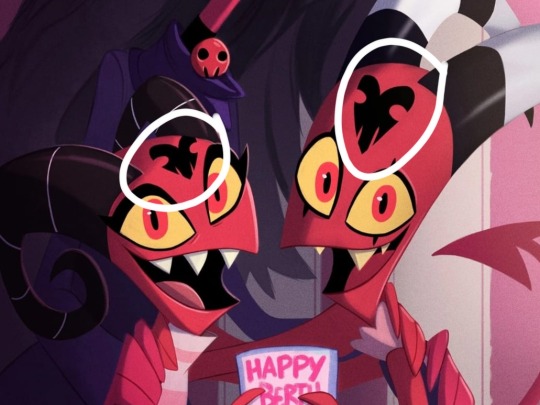
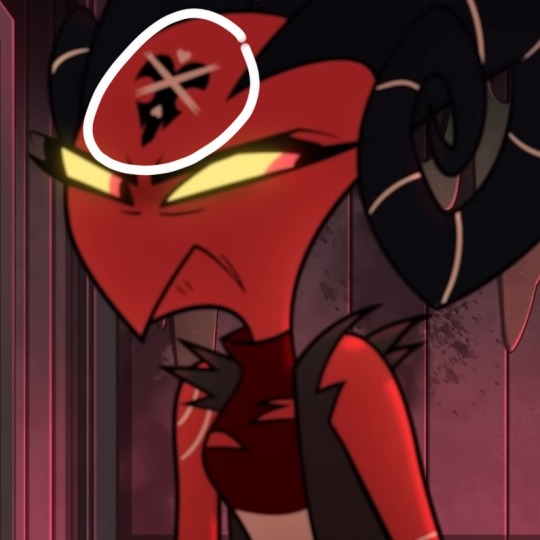
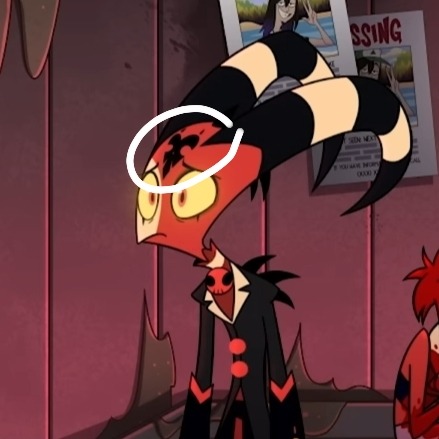
#i wanna know how their relationship got so bad :(#angst aside#this barbie wire's official appearance in the show!#this episode was wild#especially the insect jokes...#love viv for making her tan#helluva spoilers#helluva blitzo#helluva millie#helluva moxxie#helluva boss#barbie wire#vivziepop#spoilers#helluva boss spoilers
111 notes
·
View notes
Text
things about the episode:
I mean, yeah, it's setting up the next stage of the slowburn -- they are now officially no longer together, but they understand one another a little better (and blitzø is getting a sense of what he wants even if he's not ready for it at the moment/may think currently it'll never happen. that is a big step up from "refuses to admit it to himself" from one episode ago), meaning they can go through their stories and meet up again further down the road with more ability to deal with.... some stuff
verosika getting her say has been a want of mine ever since her first appearance, and this really delivered on that (all while prominently showing her crossed-out blitzø tattoo), and it also gave the feeling that maybe this has been catharsis for her, so she can move on from how he treated her
EDIT: also verosika and stolas being pals is good for me personally! we really got some good verosika Stuff here, she saw that awkward bird in the corner and hyped him up and was backup singer to his poprock song and smiled when he got some, what a woman!
if dennis is at this party, then im gonna go ahead and headcanon that some of these guests are fucking hanger-ons who only barely qualify (although clearly many of them aren't)
stolas is someone who... definitely loves blitzø. but is also quite naive and internal, as has been shown. and i think that means that he can't quite understand everything that blitzø is actually saying beneath the things that hurt him, although now a little better than before, and i think going out and getting laid and "feeling wanted" by some other guy/s is probably good for him in order to get out of his own head more
the apology tour highlights were absolutely wonderful, from doing drag at the in memoriam at the awards show, to ms mayberry and martha making it work -- all sorts find each other in hell, eh
im interested in the idea of an apology tour (regardless of how much blitzø "means" any of it until stolas and verosika) in the grand scheme of blitzø actually mending fences -- and trying to mend fences -- with a few characters already. verosika now ofc, but also fizz, and moxxie back in truth seekers, and he did try to reach out to barbie wire. there's clearly some part of him that's trying to make it work in his various relationships and has been growing and changing up until this point (this also includes loona and millie, whom he's attempted to have decent relationships with since the beginning of the show)
generally to me this feels like an episode that'll gain a lot more from where things are going -- it's promising certain things from blitzø and stolas moving forwards, so i think once the rest of the season is out it'll be fun to go back and rewatch it as a part of that arc/see how this set up those next steps (and who knows, maybe we'll get to see verosika again, possibly making out with barbie wire)
cannot believe blitzø thought calling stolas a homosexual in meme-format would work, babe you are floundering (can you imagine what loona, millie, moxxie, and fizz must be making of all of this??????? I wonder if he's told them yet)
32 notes
·
View notes
Photo
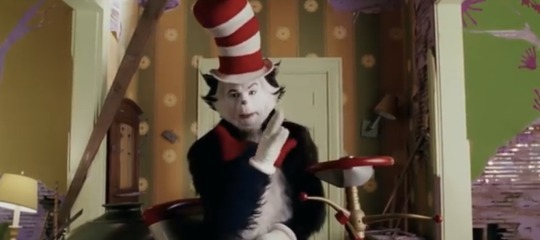
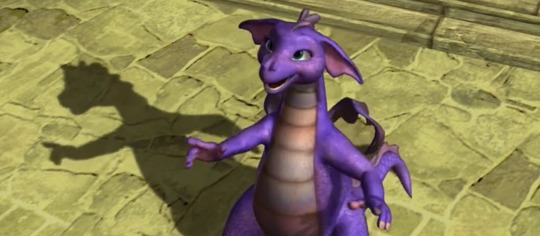
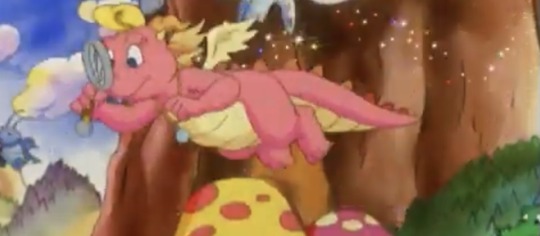
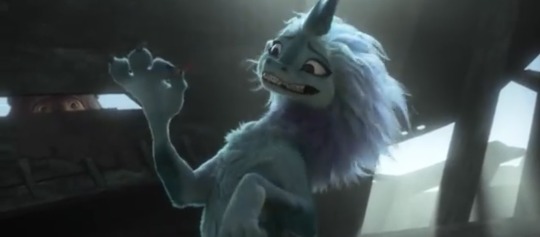
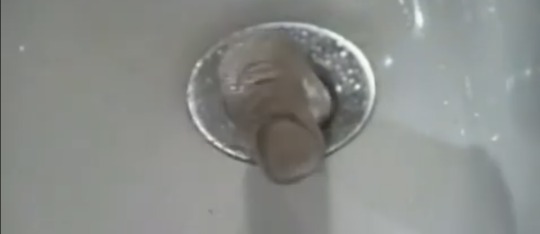



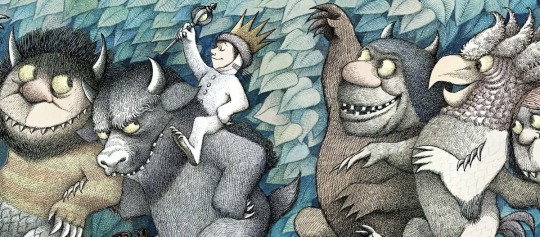
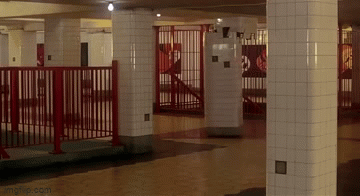
Note: Ten favorite monsters, part seven. Part six. To be clear, do to past confusion, these are not lists of monsters I’d bang. Adult-content creator =/= turned-on 24/7. ._. Sometimes I just like to talk about character design and review media I like.
I pretty much like every kind of dragon, from friendly to terrifying. If we’re going off of scary, my favorite’s maybe from The Mists of Avalon. A lot of my fave monsters are literary, but don’t have official art. :(
1. Cat in the Hat from The Cat in the Cat
The Cat in the Hat’s more enjoyable if you view it as demonic horror. There’s a lot of elements I like. Quirky architecture, jokes that go over kids’ heads, goofy magic companion, fun costumes. Yet it’s not a good movie, even by my standards. Audrey Geisel was so disgusted by it, any plans for future live-action adaptations of Theodor’s works were nixed.
I’m kind of glad TCITH was the bad live-action, early ‘00s Seuss movie instead of How the Grinch Stole Christmas. Imagine how horrifying they could have made the Grinch.
2-4. “Girly girl” dragons
Barbie As Rapunzel: I have the Penelope plushie, whose design I actually prefer to the movie’s.
Dragon Tales: Before FIM Fluttershy, Cassie was THE shy pink and yellow creature. Dragon Land’s just one of various portal fantasy realms I wanted to visit so badly as a tot. Still do.
Raya and the Last Dragon: People were way critical of Sisu’s design, calling it Elsa’s scalesona. Like Disney hasn’t reused/referenced old designs, jokingly or not. Not that their human(oid) designs are always unique… But Ghibli gets more leniency in that regard. (Haku’s a great dragon design, btw.)
5. the Moving Finger from Nightmares & Dreamscapes
Horror doesn’t have to be complicated to be effective.
6. Jean Jacket from Nope
Take elements of UFOlogy, meteorology, marine biology, and animal exploitation, then produce the most terrifying movie monster ever.
7. Stuff from The Stuff
Metaphor for frozen yogurt? Diet food craze?
8. Scary Lion from The Teletubbies
A good example of how audio can determine whether something is cute or terrifying.
9. Wild Things from Where the Wild Things Are
One elementary art class, we got to make our own chimeric Wild Things. Wish I knew where mine was. They’re grotesque, like to party, and actually pretty wholesome.
10. subway station from The Wiz
The Wiz is an interesting localization of The (Wonderful) Wizard of Oz. Garland!Dorothy is taken from Kansas to a mostly unfamiliar fantastical land. (I say “mostly,” because some of the Ozians have Kansan counterparts.) Ross!Dorothy is taken from NYC to fantastical NYC.
Originally, I considered using the book Kalidahs ‘cause I love mix-’n’-match critters. Then I watched this scene. That and the Munchkins coming out of graffiti like ghosts out of chalk outlines was oneiric as fuck. Anyway, the station isn’t just a liminal space, but another architectural monster. The train itself never appears, but we see trash bins and columns advance on Dorothy and co. There’s seemingly non-automated gates and prehensile electrical wires. Also, that peddler with his growing marionettes…
Note: The pic for “The Moving Finger” is actually from the show Monsters, but I only found out it was adapted after deciding to include it. Nightmares & Dreamscapes has one of my favorite covers, even if it’s deceptive. No scarecrow stories.
Unfortunately, the last gif can’t convey the awesome liminal horror that is the Ozified Hoyt–Schermerhorn Streets station. Fun fact, it was also used in The Warriors.
#Dr. Seuss#dragon#dragons#Barbie#Disney#minors do not interact#Stephen King#monsters#monster#horror#Nope 2022#Dragon Tales#Maurice Sendak#The Wiz#Oz#Teletubbies#Raya and the Last Dragon#Jean Jacket#Cat in the Hat#Occulonimbus edoequus#The Stuff#Moving Finger#Scary Lion#Where the Wild Things Are#Wild Things#Nope#subway station#Seuss#Nightmares & Dreamscapes#The Stuff 1985
100 notes
·
View notes
Text
In The Netherlands, Touring The Giesen Roasters Factory
Last fall, I finally got the chance to visit Giesen Coffee Roasters. Almost two years of intermittent emails, calls, texts, and mild-mannered coffee festival doorstepping had transpired between my first interview request and the morning I found myself journeying from home in Amsterdam to Giesen headquarters in Ulft. A bike, three trains, and a bus got me to the town, located in the province of Gelderland and, more precisely, within what is known as the Achterhoek, the country’s “back corner;” Germany is just a half-hour walk east.
That Monday was so chilling that most horses in fields along the way were draped with blankets and the still-erect sunflowers were suddenly shriveled. But as I would learn while sitting comfortably in the Giesen showroom that overlooks their production line, the visit’s timing was favorable. Many of their buyers want new roasters before Christmas or year-end, so I was seeing the factory in full flourish. What’s more, there was news for the new year.
In early 2019, Giesen unveiled its largest industrial-scale roaster: the W140A, which has been in development since 2017 and is named for its 140-kilo batch capacity and its automatic controls. Also due to debut is Giesen’s new roast profile software, promising to be more advanced, user-friendly, and remotely monitorable than its original version.
The Giesen W140A
Giesen is officially 12 years old, though it emerged from another entity that, in more ways than one, was its parent company. De Eik, as it was called, was a metalware factory that made parts and products for businesses in the area. One notable customer was Probat, the century-and-a-half old roaster manufacturer in Emmerich am Rhein, Germany, for whom De Eik made complete machines. De Eik was founded in 1988 by the father of Karin Bussink, who married Wilfred Giesen. When Bussink’s father died at age 50, about 25 years ago, Karin and Wilfred took over. They carried on with the metalsmithing, but in 2006, Wilfred decided to make his own fully realized roaster.
“We thought we could make a better roaster because we had the knowledge of how to build it, and we saw potential for a lot of improvements,” says Davey Giesen, Karin and Wilfred’s eldest child. “That was the point that my father designed the first roaster, the W6, and also put it on the market.”
He was just about a year old back then, but now, at age 26, is Giesen’s COO. Davey has been with the company for six years and has clearly been keeping notes.
“I think I was number 18,” he specifies, referring to where in the sequence of staff hires he falls. “So I saw the company grow.”
Studying IT and, on nights and weekends, pursuing a bachelor’s degree in management have helped prepare him for daily company duties, though his coffee education began much earlier. He got hands-on training working full-time for a year at the micro-roastery and shop that his parents ran in the nearby town of Doetinchem. They opened Koffiebranderij Venetië in 2008 “because they wanted to show how it should be done in the field,” says Davey. Besides providing a setting to test out Wilfred’s earliest products, the venue gave Giesen customers real-life, real-time lessons in running a roastery.
“But after some time,” Davey explains, “we didn’t have any time to run a roastery because of course we were getting better and better at building roasters. And we want to put the energy more into the factory than the roastery.”
Though they sold the shop about eight years ago, it still exists, and the current owners continue using the original W6A that Wilfred installed there. A souvenir from that chapter in the family’s entrepreneurial history appears in the form of the Koffiebranderij Venetië-logoed cup in which I am served coffee shortly after arriving at Giesen headquarters. Ebullient sales representative Miguel de Boer has prepared the drinks, and I talk with him before heading into the factory itself.
“We started 10 years ago with 10 people, and up until two years ago, in 2016, we had 50. In the last two years, we really expanded a lot,” he says.
Like the majority of Giesen’s staff, De Boer is a relatively recent hire. He appreciates the sales culture at Giesen after spending years as an account manager for PepsiCo, overseeing the Benelux sales of Tropicana, Gatorade, among other Big Bev and snack brands.
“In the fast-moving consumer goods, it’s hurry, hurry, hurry and small margins,” De Boer says. “Here, it’s: take it easy, big margins, no discussion about one- or two-dollar discounts. No. People might want to have a discount, but it’s not the most important thing when they want to buy quality.”
On that note, I follow De Boer on a tour. He begins in the electrical department.
“We make everything wire by wire,” he says. Here each order gets assigned a serial number and each machine-in-the-making is placed on a cart. As parts are amassed, they get checked off on a list. A photo documents the list and gets archived; this process is repeated elsewhere along the production line to ensure completeness and to keep record of what has been done when.
To expedite repairs, the warehouse shelves stay neatly stacked with piles of spare parts. In a fluorescent-lit office, a 24-hour service support staff sits, ready to field calls, emails, or Skypes from six continents. Visitors to the Giesen stand at World of Coffee 2018 may have noticed on hand some VR goggles and screens; a sales tool, they encourage prospective buyers to cozy up, virtually, to the various machines and envision how they might fit in their own workspaces.
The next department through which we wend is welding. Bodies of the roasters—as well as Giesen’s destoners, green bean conveyors, cyclones, filters, afterburners, presentation tables, and coffee bins—are made of steel. I see huge sheet metal rectangles resting on sawhorse tables, as casually available seeming as reams of paper might be in photocopy shop. Most materials are sourced from within Europe, and some come from very nearby. Ulft is situated in a region known as the Oude IJsselstreek, where the soil contains high amounts of iron, leading to a locally quite prolific industry; the earliest blast furnace is recorded as first appearing in 1689.
After assemblage, attention turns to surfaces. In the degreasing and painting department, a chemical scent hangs in the air, fittingly. Roasters come in standard black or customers can request a special paint job in up to three tones with a glossy or a matte finish. Lately, there has been demand for the unpainted raw look, which results in a griege coat that shows all the welding marks. Roofs come in stainless steel or hammered gold, and handles are made of olive, bubinga, or zebrano wood. Logos are not the only way to customize. De Boer is not being hyperbolic when he tells me anything is possible.
“You can have sparkles on it; you can even have Swarovski diamonds,” he says.
At the end of the production line, it is time for testing. This final step is usually executed by Wilfred, Davey, or Marc Weber, Giesen’s global sales manager. After three successful roasting sessions, a roaster is deemed ready to leave the factory.
A wall-mounted map in the front office is marked up with red and green radii showing the varying costs of delivery according to distance. The machines have all been assembled by hand in the Netherlands, and a bucolic Dutch touch travels with outgoing W1, W6, and W15 roasters. They reach their destinations by horse trailer, pulled by cars driven by the very mechanics who handle the installation. Larger machines go by truck while their mechanics catch a flight. Roasters bound for destinations that fall off the map are flown or sent by sea container. The company relies on 35 trained agents around the world who assist with sales, installation, and repairs. Where there are none regionally (for example, in Argentina and Maldives), Giesen headquarters deploys its own mechanics. These days, their market is wider than ever. I’m told that South Korea, China, and Germany are among the top purchasing countries. Roasters are still being shipped to Iran and Syria. And as of March 2018, Giesen appointed Pennsylvania-based agent David Sutfin for the US and plans to expand the Stateside team with three more agents.
The W6A remains the most popular model. Next is the W15A sold with an external cyclone (which permits less interrupted roasting because it does not require a user to stop mid-session to remove bean chaffs from inside the machine). The smallest-capacity model is the WP1, intended for sample roasting. What must be the very smallest Giesen ever made, however, stands on a table in the showroom where I begin and end my visit. Built in honor of Wilfred’s 50th birthday, in 2016, the delightful little dummy is, literally, fit for a Barbie Dreamhouse.
Human-size Giesen equipment is also exhibited in the showroom, as is a vintage sample roaster. Between that set-up and the espresso bar, featuring a two-group Synesso MVP, the back wall displays a collection of T-shirts lately being promoted by the new marketing department employees. A recent addition is a black fitted V-neck with the company name in swash-heavy font scripted over the fuchsia outline of a W6. It makes me think of the hot pink one- and six-kilo Giesen roasters once famously purchased by Kaffismiðja Islands coffee roasters in Reykjavik. It also reflects how this once mom-and-pop heavy-metal factory is changing with the times and appealing to a broader-hued spectrum of clients.
“They sell like crazy—people just want a T-shirt with ‘Giesen’ on it,” says De Boer.
“Even when we are at events, when we close down for the day, we have to take away these items,” he shares as he points to roaster handles, the likes of which expo attendees have apparently pilfered in the past. Still, De Boer sounds more flattered than flummoxed.
On a daily basis, Karin and Wilfred handle general management. Davey’s younger brother, Dani Giesen, oversees facilities and building management. The youngest Giesen sibling is still in secondary school, so it is premature to say if her future is at the factory. Regardless, the family is well positioned to communicate with a major rising segment of the coffee industry: younger people and their globally, millennially minded counterparts. I ask Davey what he has observed of his peers, particularly in comparison to his parents’ coffee industry cohorts.
“They do a lot of things differently,” he replies. “The older generation still want to have manual controls and want to see everything analog, and the generation after that is more about automatization, running a better business. They really use the profile system to control the roaster and all that kind of thing, so it’s more about the digital world.”
Davey Giesen
When I inquire about gender balance among clients, Davey acknowledges that “the market is more men than women.” He adds, “But we find it really good that more women are building roasteries. We also see a lot of couples doing this together, husbands and wives.”
The life-partners-as-corporate-partners format has certainly yielded much for the Giesens. In giving a new, more narrowly defined purpose to an old factory, Wilfred and Karin have enriched the specialty coffee industry with their products and their progeny. Both contributions are relatively young, but their potential to keep upping the quality of roasting and its accessibility for everyone is profound.
Karina Hof is a Sprudge staff writer based in Amsterdam. Read more Karina Hof on Sprudge.
The post In The Netherlands, Touring The Giesen Roasters Factory appeared first on Sprudge.
In The Netherlands, Touring The Giesen Roasters Factory published first on https://medium.com/@LinLinCoffee
0 notes
Text
In The Netherlands, Touring The Giesen Roasters Factory
Last fall, I finally got the chance to visit Giesen Coffee Roasters. Almost two years of intermittent emails, calls, texts, and mild-mannered coffee festival doorstepping had transpired between my first interview request and the morning I found myself journeying from home in Amsterdam to Giesen headquarters in Ulft. A bike, three trains, and a bus got me to the town, located in the province of Gelderland and, more precisely, within what is known as the Achterhoek, the country’s “back corner;” Germany is just a half-hour walk east.
That Monday was so chilling that most horses in fields along the way were draped with blankets and the still-erect sunflowers were suddenly shriveled. But as I would learn while sitting comfortably in the Giesen showroom that overlooks their production line, the visit’s timing was favorable. Many of their buyers want new roasters before Christmas or year-end, so I was seeing the factory in full flourish. What’s more, there was news for the new year.
In early 2019, Giesen unveiled its largest industrial-scale roaster: the W140A, which has been in development since 2017 and is named for its 140-kilo batch capacity and its automatic controls. Also due to debut is Giesen’s new roast profile software, promising to be more advanced, user-friendly, and remotely monitorable than its original version.
The Giesen W140A
Giesen is officially 12 years old, though it emerged from another entity that, in more ways than one, was its parent company. De Eik, as it was called, was a metalware factory that made parts and products for businesses in the area. One notable customer was Probat, the century-and-a-half old roaster manufacturer in Emmerich am Rhein, Germany, for whom De Eik made complete machines. De Eik was founded in 1988 by the father of Karin Bussink, who married Wilfred Giesen. When Bussink’s father died at age 50, about 25 years ago, Karin and Wilfred took over. They carried on with the metalsmithing, but in 2006, Wilfred decided to make his own fully realized roaster.
“We thought we could make a better roaster because we had the knowledge of how to build it, and we saw potential for a lot of improvements,” says Davey Giesen, Karin and Wilfred’s eldest child. “That was the point that my father designed the first roaster, the W6, and also put it on the market.”
He was just about a year old back then, but now, at age 26, is Giesen’s COO. Davey has been with the company for six years and has clearly been keeping notes.
“I think I was number 18,” he specifies, referring to where in the sequence of staff hires he falls. “So I saw the company grow.”
Studying IT and, on nights and weekends, pursuing a bachelor’s degree in management have helped prepare him for daily company duties, though his coffee education began much earlier. He got hands-on training working full-time for a year at the micro-roastery and shop that his parents ran in the nearby town of Doetinchem. They opened Koffiebranderij Venetië in 2008 “because they wanted to show how it should be done in the field,” says Davey. Besides providing a setting to test out Wilfred’s earliest products, the venue gave Giesen customers real-life, real-time lessons in running a roastery.
“But after some time,” Davey explains, “we didn’t have any time to run a roastery because of course we were getting better and better at building roasters. And we want to put the energy more into the factory than the roastery.”
Though they sold the shop about eight years ago, it still exists, and the current owners continue using the original W6A that Wilfred installed there. A souvenir from that chapter in the family’s entrepreneurial history appears in the form of the Koffiebranderij Venetië-logoed cup in which I am served coffee shortly after arriving at Giesen headquarters. Ebullient sales representative Miguel de Boer has prepared the drinks, and I talk with him before heading into the factory itself.
“We started 10 years ago with 10 people, and up until two years ago, in 2016, we had 50. In the last two years, we really expanded a lot,” he says.
Like the majority of Giesen’s staff, De Boer is a relatively recent hire. He appreciates the sales culture at Giesen after spending years as an account manager for PepsiCo, overseeing the Benelux sales of Tropicana, Gatorade, among other Big Bev and snack brands.
“In the fast-moving consumer goods, it’s hurry, hurry, hurry and small margins,” De Boer says. “Here, it’s: take it easy, big margins, no discussion about one- or two-dollar discounts. No. People might want to have a discount, but it’s not the most important thing when they want to buy quality.”
On that note, I follow De Boer on a tour. He begins in the electrical department.
“We make everything wire by wire,” he says. Here each order gets assigned a serial number and each machine-in-the-making is placed on a cart. As parts are amassed, they get checked off on a list. A photo documents the list and gets archived; this process is repeated elsewhere along the production line to ensure completeness and to keep record of what has been done when.
To expedite repairs, the warehouse shelves stay neatly stacked with piles of spare parts. In a fluorescent-lit office, a 24-hour service support staff sits, ready to field calls, emails, or Skypes from six continents. Visitors to the Giesen stand at World of Coffee 2018 may have noticed on hand some VR goggles and screens; a sales tool, they encourage prospective buyers to cozy up, virtually, to the various machines and envision how they might fit in their own workspaces.
The next department through which we wend is welding. Bodies of the roasters—as well as Giesen’s destoners, green bean conveyors, cyclones, filters, afterburners, presentation tables, and coffee bins—are made of steel. I see huge sheet metal rectangles resting on sawhorse tables, as casually available seeming as reams of paper might be in photocopy shop. Most materials are sourced from within Europe, and some come from very nearby. Ulft is situated in a region known as the Oude IJsselstreek, where the soil contains high amounts of iron, leading to a locally quite prolific industry; the earliest blast furnace is recorded as first appearing in 1689.
After assemblage, attention turns to surfaces. In the degreasing and painting department, a chemical scent hangs in the air, fittingly. Roasters come in standard black or customers can request a special paint job in up to three tones with a glossy or a matte finish. Lately, there has been demand for the unpainted raw look, which results in a griege coat that shows all the welding marks. Roofs come in stainless steel or hammered gold, and handles are made of olive, bubinga, or zebrano wood. Logos are not the only way to customize. De Boer is not being hyperbolic when he tells me anything is possible.
“You can have sparkles on it; you can even have Swarovski diamonds,” he says.
At the end of the production line, it is time for testing. This final step is usually executed by Wilfred, Davey, or Marc Weber, Giesen’s global sales manager. After three successful roasting sessions, a roaster is deemed ready to leave the factory.
A wall-mounted map in the front office is marked up with red and green radii showing the varying costs of delivery according to distance. The machines have all been assembled by hand in the Netherlands, and a bucolic Dutch touch travels with outgoing W1, W6, and W15 roasters. They reach their destinations by horse trailer, pulled by cars driven by the very mechanics who handle the installation. Larger machines go by truck while their mechanics catch a flight. Roasters bound for destinations that fall off the map are flown or sent by sea container. The company relies on 35 trained agents around the world who assist with sales, installation, and repairs. Where there are none regionally (for example, in Argentina and Maldives), Giesen headquarters deploys its own mechanics. These days, their market is wider than ever. I’m told that South Korea, China, and Germany are among the top purchasing countries. Roasters are still being shipped to Iran and Syria. And as of March 2018, Giesen appointed Pennsylvania-based agent David Sutfin for the US and plans to expand the Stateside team with three more agents.
The W6A remains the most popular model. Next is the W15A sold with an external cyclone (which permits less interrupted roasting because it does not require a user to stop mid-session to remove bean chaffs from inside the machine). The smallest-capacity model is the WP1, intended for sample roasting. What must be the very smallest Giesen ever made, however, stands on a table in the showroom where I begin and end my visit. Built in honor of Wilfred’s 50th birthday, in 2016, the delightful little dummy is, literally, fit for a Barbie Dreamhouse.
Human-size Giesen equipment is also exhibited in the showroom, as is a vintage sample roaster. Between that set-up and the espresso bar, featuring a two-group Synesso MVP, the back wall displays a collection of T-shirts lately being promoted by the new marketing department employees. A recent addition is a black fitted V-neck with the company name in swash-heavy font scripted over the fuchsia outline of a W6. It makes me think of the hot pink one- and six-kilo Giesen roasters once famously purchased by Kaffismiðja Islands coffee roasters in Reykjavik. It also reflects how this once mom-and-pop heavy-metal factory is changing with the times and appealing to a broader-hued spectrum of clients.
“They sell like crazy—people just want a T-shirt with ‘Giesen’ on it,” says De Boer.
“Even when we are at events, when we close down for the day, we have to take away these items,” he shares as he points to roaster handles, the likes of which expo attendees have apparently pilfered in the past. Still, De Boer sounds more flattered than flummoxed.
On a daily basis, Karin and Wilfred handle general management. Davey’s younger brother, Dani Giesen, oversees facilities and building management. The youngest Giesen sibling is still in secondary school, so it is premature to say if her future is at the factory. Regardless, the family is well positioned to communicate with a major rising segment of the coffee industry: younger people and their globally, millennially minded counterparts. I ask Davey what he has observed of his peers, particularly in comparison to his parents’ coffee industry cohorts.
“They do a lot of things differently,” he replies. “The older generation still want to have manual controls and want to see everything analog, and the generation after that is more about automatization, running a better business. They really use the profile system to control the roaster and all that kind of thing, so it’s more about the digital world.”
Davey Giesen
When I inquire about gender balance among clients, Davey acknowledges that “the market is more men than women.” He adds, “But we find it really good that more women are building roasteries. We also see a lot of couples doing this together, husbands and wives.”
The life-partners-as-corporate-partners format has certainly yielded much for the Giesens. In giving a new, more narrowly defined purpose to an old factory, Wilfred and Karin have enriched the specialty coffee industry with their products and their progeny. Both contributions are relatively young, but their potential to keep upping the quality of roasting and its accessibility for everyone is profound.
Karina Hof is a Sprudge staff writer based in Amsterdam. Read more Karina Hof on Sprudge.
The post In The Netherlands, Touring The Giesen Roasters Factory appeared first on Sprudge.
from Sprudge http://bit.ly/2WYei6t
0 notes